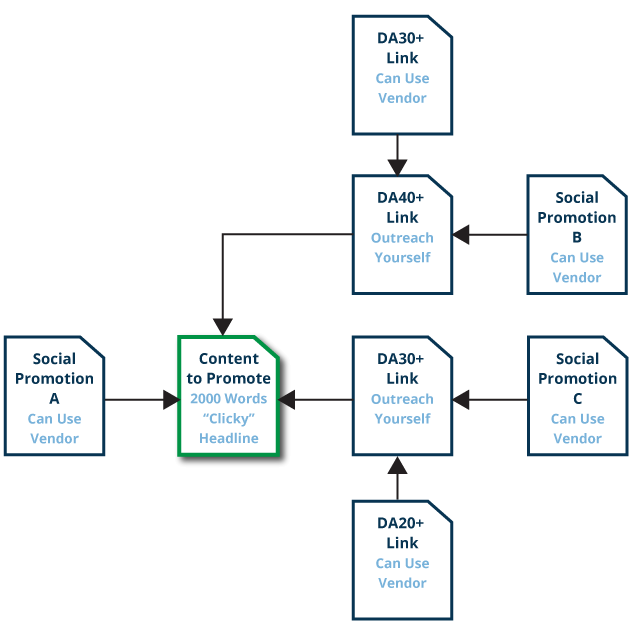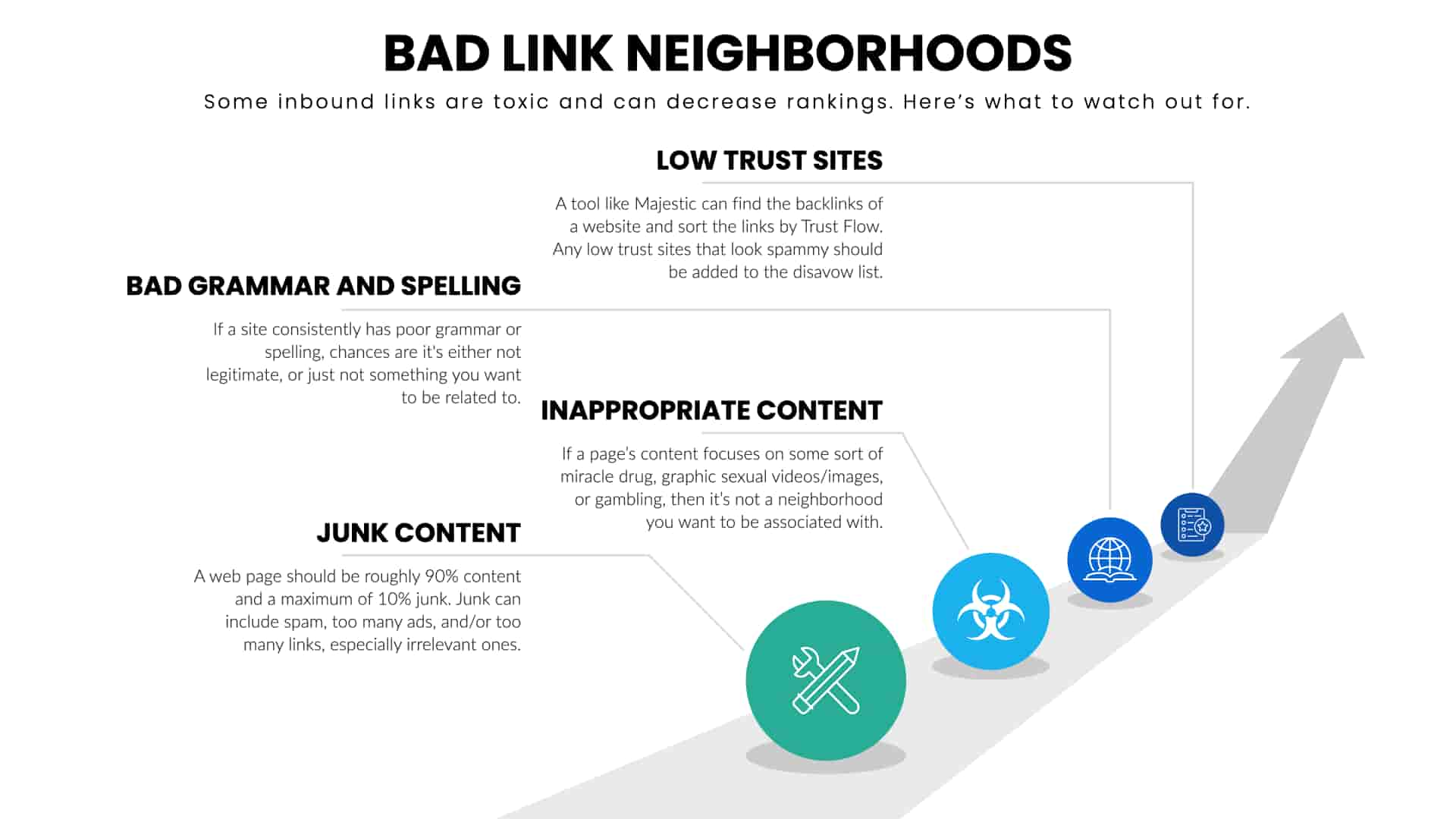How to Analyze and Improve Your Website’s Link Profile
If you’re a business owner, it doesn’t matter if your site’s traffic has increased. Traffic is just visitors; it doesn’t mean that people are actually converting into customers or leads. A higher number of visitors won’t help if they’re not being converted into sales.
In order to improve your conversion rate, you may need to analyze and improve your website’s link profiles so that search engines treat your site to higher visibility.
What is a link profile?
A link profile refers to the collection of links that point to a website or a specific page on that website. A link profile is important because search engines like Google consider the quality and quantity of inbound links as a key factor when determining a website’s authority, relevance, and ranking in search engine results pages (SERPs).
A link profile consists of both internal and external links:
- Internal links are links connecting one webpage to another within the same website.
- External links are links from other websites that point to a specific page on the website in question.
The quality of a link profile is determined by several factors, including:
- The authority and relevance of the websites linking to the page
- The diversity of the link sources
- The anchor text used in the links
For example, a link from a high-authority website with a relevant topic is considered more valuable than a link from a low-quality website with an irrelevant topic.
A healthy link profile is a mix of links from various sources, including:
- Social media platforms
- Blogs
- Directories
- Other websites
In addition, the anchor text used in the links should be varied and relevant to the content on the linked page.
Monitoring and analyzing a website’s link profile is essential to any successful SEO strategy. By analyzing the link profile, SEO professionals can identify potential issues, such as low-quality or spammy links, and take steps to disavow or remove them.
Additionally, analyzing the link profile can help identify opportunities to acquire high-quality links from authoritative websites, improving the website’s search engine rankings and driving more traffic to the site.
Why do you need to analyze your link profile?
Analyzing your link profile is essential in any successful search engine optimization (SEO) strategy. Your link profile refers to the collection of inbound links pointing to your website from other websites. These links are one of the most important factors that search engines use to determine the authority and relevance of your website for specific search queries.
Analyzing your link profile can help you identify any potential issues that may negatively impact your website’s search engine rankings. For example, if your link profile contains many low-quality or spammy links, your website may be penalized by search engines like Google. Additionally, analyzing your link profile can help you identify opportunities to improve your website’s rankings by acquiring high-quality links from authoritative websites.
Another reason you need to analyze your link profile is to monitor the effectiveness of your link-building efforts. By regularly analyzing your link profile, you can determine whether your link-building campaigns result in high-quality links that positively impact your website’s rankings. If your link-building efforts are not producing the desired results, you can adjust your strategy accordingly.
Finally, analyzing your link profile can also help you identify potential opportunities for collaboration and networking with other websites in your niche. By identifying websites that are linking to your competitors, you can reach out to these websites to see if they would be interested in linking to your website as well. This type of outreach can help you acquire high-quality links that can improve your website’s search engine rankings and drive more traffic to your site.
Identify the key pages on your site
Key pages are the most important pages on your site. They are the ones that drive the most traffic or have the highest conversion rate. Key pages may also be called “high value” or “money” pages.
Key pages should be identified by analyzing which URLs get the most organic search traffic, and then analyzing what keywords those URLs rank for in search engines.
Check the link quality
Checking the quality of links is an important part of analyzing a website’s link profile and developing an effective SEO strategy.
The first thing to consider is Domain Authority. You may use a tool like Moz’s Domain Authority or Ahrefs’ Domain Rating to check the authority of the website that the link is coming from. Websites with higher authority are generally considered more valuable for SEO purposes.
Second, check the relevance of the linking website to the content on the page being linked to. A link from a website that is relevant to the content on the linked page is considered more valuable than a link from an irrelevant website.
Third, check the anchor text used in the link. The anchor text should be relevant to the content on the linked page and not overly optimized with exact-match keywords.
Fourth, use a tool like Moz’s Spam Score or Ahrefs’ Spam Rating to check the spam score of the linking website. Websites with high spam scores should be avoided, as links from these sites could harm your website’s SEO.
Fifth, check the traffic and engagement metrics of the linking website. A website with high traffic and engagement metrics is generally considered more valuable for SEO purposes.
Finally, check the diversity of the linking sources. A link profile with various high-quality sources is considered more valuable than a link profile with a limited number of sources.
Learn about anchor text
The anchor text of a link is the text that appears in blue and is underlined when you hover over it. Using different anchor text for each link is important because Google looks at this information when deciding how to rank your site.
The best anchor text is relevant and keyword-rich, while the worst anchor text is irrelevant and keyword-rich (e.g., “click here” or “this website”).
Find old broken links
To find old broken links, the first thing you need to do is check for 404 errors. These pages exist but can’t be found by a search engine, so they don’t appear in search results and are essentially invisible to visitors. If you have any 404s on your site, it’s worth fixing them as soon as possible–not only because it’ll help with SEO (and therefore boost traffic), but also because it will improve the user experience for people who land on those pages and try to find what they’re looking for!.
Next, you should check for links that are no longer valid or active. This is another way to identify potential issues with your link profile, especially if there are many broken ones clustered together (e.g., all pointing at an old version of an article). It can also clue you into opportunities where other sites may be linking back to yours without realizing that the content has been updated since then. If this happens often enough over time, it could lead some users astray when trying to find something specific on your site through Google searches, so keep track of these instances as well so that when necessary, adjustments need to be made later down the line.
Audit for new and missing links
It is crucial to implement good SEO website audit processes. This means checking for new links, missing links, and broken links. You should be able to find a list of sites linking to you by searching Google or Bing for “inurl:links” (without quotes) along with your site’s domain name.
This will show all other web pages that mention links back to yours. If you don’t see any results here, it could mean that nobody has linked back yet, or maybe there are no relevant pages on those sites where they would link back (e.g., if someone was writing about how awesome cats are but never mentioned anything about dogs). Either way, this is worth further investigating to determine why no one has linked yet.
Conclusion
By analyzing the links that point to your site and their anchor text, you can identify areas where you need to do more outreach or better optimize your content. You can also use this information to find broken links on your own website before Google does! In short, link analysis can be a valuable tool for identifying opportunities to improve your website’s SEO and make it rank higher.
Tags: SEO.


